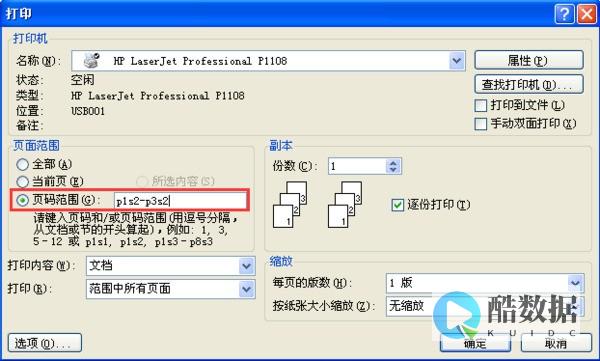我们有时可能需要在远程机器上运行一些命令。如果只是偶尔进行的操作,要实现这个目的,可以登录到远程系统上直接执行命令。但是每次都这么做的话,就有点烦人了。既然如此,有没有摆脱这种麻烦操作的更佳方案?
是的,你可以从你本地系统上执行这些操作,而不用登录到远程系统上。这有什么好处吗?毫无疑问。这会为你节省很多好时光。
这是怎么实现的?SSH 允许你无需登录到远程计算机就可以在它上面运行命令。
通用语法如下所示:
$ ssh [用户名]@[远程主机名或 IP] [命令或脚本]
1) 如何通过 SSH 在远程 Linux 系统上运行命令
下面的例子允许用户通过 ssh 在远程 Linux 机器上运行 df 命令。
$ ssh[emailprotected]df -hFilesystem Size Used Avail Use% Mounted on/dev/mapper/centos-root 27G 4.4G 23G 17% /devtmpfs 903M 0 903M 0% /devtmpfs 920M 0 920M 0% /dev/shmtmpfs 920M 9.3M 910M 2% /runtmpfs 920M 0 920M 0% /sys/fs/cgroup/dev/sda1 1014M 179M 836M 18% /boottmpfs 184M 8.0K 184M 1% /run/user/42tmpfs 184M 0 184M 0% /run/user/1000
2) 如何通过 SSH 在远程 Linux 系统上运行多条命令
下面的例子允许用户通过 ssh 在远程 Linux 机器上一次运行多条命令。
同时在远程 Linux 系统上运行 uptime 命令和 free 命令。
$ ssh[emailprotected]“uptime && free -m”23:05:10 up 10 min, 0 users, load average: 0.00, 0.03, 0.03total used free shared Buffers cachedMem: 1878 432 1445 1 100 134-/+ buffers/cache: 197 1680Swap: 3071 0 3071
3) 如何通过 SSH 在远程 Linux 系统上运行带 sudo 权限的命令
下面的例子允许用户通过 ssh 在远程 Linux 机器上运行带有 sudo 权限 的 fdisk 命令。
普通用户不允许执行系统二进制(/usr/sbin/)目录下提供的命令。用户需要 root 权限来运行它。
所以你需要 root 权限,好在 Linux 系统上运行 fdisk 命令。which 命令返回给定命令的完整可执行路径。
$ which fdisk/usr/sbin/fdisk$ ssh -t[emailprotected]“sudo fdisk -l”[sudo] password for daygeek:Disk /dev/sda: 32.2 GB, 32212254720 bytes, 62914560 sectorsUnits = sectors of 1 * 512 = 512 bytesSector size (logical/physical): 512 bytes / 512 bytesI/O size (minimum/optimal): 512 bytes / 512 bytesDisk label type: dosDisk identifier: 0x000bf685Device Boot Start End Blocks Id System/dev/sda1 * 2048 2099199 1048576 83 Linux/dev/sda2 2099200 62914559 30407680 8e Linux LVMDisk /dev/sdb: 10.7 GB, 10737418240 bytes, 20971520 sectorsUnits = sectors of 1 * 512 = 512 bytesSector size (logical/physical): 512 bytes / 512 bytesI/O size (minimum/optimal): 512 bytes / 512 bytesDisk /dev/mapper/centos-root: 29.0 GB, 28982640640 bytes, 56606720 sectorsUnits = sectors of 1 * 512 = 512 bytesSector size (logical/physical): 512 bytes / 512 bytesI/O size (minimum/optimal): 512 bytes / 512 bytesDisk /dev/mapper/centos-swap: 2147 MB, 2147483648 bytes, 4194304 sectorsUnits = sectors of 1 * 512 = 512 bytesSector size (logical/physical): 512 bytes / 512 bytesI/O size (minimum/optimal): 512 bytes / 512 bytesConnection to Centos7.2daygeek.com closed.
4) 如何通过 SSH 在远程 Linux 系统上运行带 sudo 权限的服务控制命令
下面的例子允许用户通过 ssh 在远程 Linux 机器上运行带有 sudo 权限的服务控制命令。
$ ssh -t[emailprotected]“sudo systemctl restart httpd”[sudo] password for daygeek:Connection to centos7.2daygeek.com closed.
5) 如何通过非标准端口 SSH 在远程 Linux 系统上运行命令
下面的例子允许用户通过 ssh 在使用了非标准端口的远程 Linux 机器上运行 hostnamectl 命令。
$ ssh -p 2200[emailprotected]hostnamectlStatic hostname: Ubuntu18.2daygeek.comIcon name: computer-vmChassis: vmMachine ID: 27f6c2febda84dc881f28fd145077187Boot ID: bbeccdf932be41ddb5deae9e5f15183dVirtualization: oracleOperating System: Ubuntu 18.04.2 LTSKernel: Linux 4.15.0-60-genericArchitecture: x86-64
6) 如何将远程系统的输出保存到本地系统
下面的例子允许用户通过 ssh 在远程 Linux 机器上运行 top 命令,并将输出保存到本地系统。
$ ssh[emailprotected]“top -bc | head -n 35” > /tmp/top-output.txtcat /tmp/top-output.txttop – 01:13:11 up 18 min, 1 user, load average: 0.01, 0.05, 0.10Tasks: 168 total, 1 running, 167 sleeping, 0 stopped, 0 zombie%Cpu(s): 0.0 us, 6.2 sy, 0.0 ni, 93.8 id, 0.0 wa, 0.0 hi, 0.0 si, 0.0 stKiB Mem : 1882300 total, 1176324 free, 342392 used, 363584 buff/cacheKiB Swap: 2097148 total, 2097148 free, 0 used. 1348140 avail MemPID USER PR NI VIRT RES SHR S %CPU %MEM TIME+ COMMAND4943 daygeek 20 0 162052 2248 1612 R 10.0 0.1 0:00.07 top -bc1 root 20 0 128276 6936 4204 S 0.0 0.4 0:03.08 /usr/lib/sy+2 root 20 0 0 0 0 S 0.0 0.0 0:00.00 [kthreadd]3 root 20 0 0 0 0 S 0.0 0.0 0:00.25 [ksoftirqd/+4 root 20 0 0 0 0 S 0.0 0.0 0:00.00 [kworker/0:+5 root 0 -20 0 0 0 S 0.0 0.0 0:00.00 [kworker/0:+7 root rt 0 0 0 0 S 0.0 0.0 0:00.00 [migration/+8 root 20 0 0 0 0 S 0.0 0.0 0:00.00 [rcu_bh]9 root 20 0 0 0 0 S 0.0 0.0 0:00.77 [rcu_sched]10 root 0 -20 0 0 0 S 0.0 0.0 0:00.00 [lru-add-dr+11 root rt 0 0 0 0 S 0.0 0.0 0:00.01 [watchdog/0]13 root 20 0 0 0 0 S 0.0 0.0 0:00.00 [kdevtmpfs]14 root 0 -20 0 0 0 S 0.0 0.0 0:00.00 [netns]15 root 20 0 0 0 0 S 0.0 0.0 0:00.00 [khungtaskd]16 root 0 -20 0 0 0 S 0.0 0.0 0:00.00 [writeback]17 root 0 -20 0 0 0 S 0.0 0.0 0:00.00 [kintegrity+18 root 0 -20 0 0 0 S 0.0 0.0 0:00.00 [bioset]19 root 0 -20 0 0 0 S 0.0 0.0 0:00.00 [bioset]20 root 0 -20 0 0 0 S 0.0 0.0 0:00.00 [bioset]
或者你也可以使用以下格式在远程系统上运行多条命令:
$ ssh[emailprotected]<< EOFhostnamectlfree -mgrep daygeek /etc/passwdEOF
上面命令的输出如下:
Pseudo-terminal will not be allocated because stdin is not a terminal.Static hostname: CentOS7.2daygeek.comIcon name: computer-vmChassis: vmMachine ID: 002f47b82af248f5be1d67b67e03514cBoot ID: dca9a1ba06374d7d96678f9461752482Virtualization: kvmOperating System: CentOS Linux 7 (Core)CPE OS Name: cpe:/o:centos:centos:7Kernel: Linux 3.10.0-957.el7.x86_64Architecture: x86-64total used free shared buff/cache availableMem: 1838 335 1146 11 355 1314Swap: 2047 0 2047daygeek:x:1000:1000:2daygeek:/home/daygeek:/bin/bash
7) 如何在远程系统上运行本地 Bash 脚本
下面的例子允许用户通过 ssh 在远程 Linux 机器上运行本地 bash 脚本 remote-test.sh。
创建一个 shell 脚本并执行它。
$ vi /tmp/remote-test.sh#!/bin/bash#Name: remote-test.sh#——————–uptimefree -mdf -huname -ahostnamectl
上面命令的输出如下:
$ ssh[emailprotected]‘bash -s’ < /tmp/remote-test.sh01:17:09 up 22 min, 1 user, load average: 0.00, 0.02, 0.08total used free shared buff/cache availableMem: 1838 333 1148 11 355 1316Swap: 2047 0 2047Filesystem Size Used Avail Use% Mounted on/dev/mapper/centos-root 27G 4.4G 23G 17% /devtmpfs 903M 0 903M 0% /devtmpfs 920M 0 920M 0% /dev/shmtmpfs 920M 9.3M 910M 2% /runtmpfs 920M 0 920M 0% /sys/fs/cgroup/dev/sda1 1014M 179M 836M 18% /boottmpfs 184M 12K 184M 1% /run/user/42tmpfs 184M 0 184M 0% /run/user/1000Linux CentOS7.2daygeek.com 3.10.0-957.el7.x86_64 #1 SMP Thu Nov 8 23:39:32 UTC 2018 x86_64 x86_64 x86_64 GNU/LinuxStatic hostname: CentOS7.2daygeek.comIcon name: computer-vmChassis: vmMachine ID: 002f47b82af248f5be1d67b67e03514cBoot ID: dca9a1ba06374d7d96678f9461752482Virtualization: kvmOperating System: CentOS Linux 7 (Core)CPE OS Name: cpe:/o:centos:centos:7Kernel: Linux 3.10.0-957.el7.x86_64Architecture: x86-64
或者也可以使用管道。如果你觉得输出不太好看,再做点修改让它更优雅些。
$ vi /tmp/remote-test-1.sh#!/bin/bash#Name: remote-test.shecho “———System Uptime——————————————–”uptimeecho -e “\n”echo “———Memory Usage———————————————”free -mecho -e “\n”echo “———Disk Usage———————————————–”df -hecho -e “\n”echo “———Kernel Version——————————————-”uname -aecho -e “\n”echo “———HostName Info——————————————–”hostnamectlecho “——————————————————————“
上面脚本的输出如下:
$ cat /tmp/remote-test.sh | ssh[emailprotected]Pseudo-terminal will not be allocated because stdin is not a terminal.———System Uptime——————————————–03:14:09 up 2:19, 1 user, load average: 0.00, 0.01, 0.05———Memory Usage———————————————total used free shared buff/cache availableMem: 1838 376 1063 11 398 1253Swap: 2047 0 2047———Disk Usage———————————————–Filesystem Size Used Avail Use% Mounted on/dev/mapper/centos-root 27G 4.4G 23G 17% /devtmpfs 903M 0 903M 0% /devtmpfs 920M 0 920M 0% /dev/shmtmpfs 920M 9.3M 910M 2% /runtmpfs 920M 0 920M 0% /sys/fs/cgroup/dev/sda1 1014M 179M 836M 18% /boottmpfs 184M 12K 184M 1% /run/user/42tmpfs 184M 0 184M 0% /run/user/1000tmpfs 184M 0 184M 0% /run/user/0———Kernel Version——————————————-Linux CentOS7.2daygeek.com 3.10.0-957.el7.x86_64 #1 SMP Thu Nov 8 23:39:32 UTC 2018 x86_64 x86_64 x86_64 GNU/Linux———HostName Info——————————————–Static hostname: CentOS7.2daygeek.comIcon name: computer-vmChassis: vmMachine ID: 002f47b82af248f5be1d67b67e03514cBoot ID: dca9a1ba06374d7d96678f9461752482Virtualization: kvmOperating System: CentOS Linux 7 (Core)CPE OS Name: cpe:/o:centos:centos:7Kernel: Linux 3.10.0-957.el7.x86_64Architecture: x86-64
8) 如何同时在多个远程系统上运行多条指令
下面的 bash 脚本允许用户同时在多个远程系统上运行多条指令。使用简单的 for 循环实现。
为了实现这个目的,你可以尝试 PSSH 命令 或 ClusterShell 命令 或 DSH 命令。
$ vi /tmp/multiple-host.shfor host in CentOS7.2daygeek.com CentOS6.2daygeek.comdossh daygeek@${host} “uname -a;uptime;date;w”done
上面脚本的输出如下:
$ sh multiple-host.shLinux CentOS7.2daygeek.com 3.10.0-957.el7.x86_64 #1 SMP Thu Nov 8 23:39:32 UTC 2018 x86_64 x86_64 x86_64 GNU/Linux01:33:57 up 39 min, 1 user, load average: 0.07, 0.06, 0.06Wed Sep 25 01:33:57 CDT 201901:33:57 up 39 min, 1 user, load average: 0.07, 0.06, 0.06USER TTY FROM[emailprotected]IDLE JCPU PCPU WHATdaygeek pts/0 192.168.1.6 01:08 23:25 0.06s 0.06s -bashLinux CentOS6.2daygeek.com 2.6.32-754.el6.x86_64 #1 SMP Tue Jun 19 21:26:04 UTC 2018 x86_64 x86_64 x86_64 GNU/Linux23:33:58 up 39 min, 0 users, load average: 0.00, 0.00, 0.00Tue Sep 24 23:33:58 MST 201923:33:58 up 39 min, 0 users, load average: 0.00, 0.00, 0.00USER TTY FROM[emailprotected]IDLE JCPU PCPU WHAT
9) 如何使用 sshpass 命令添加一个密码
如果你觉得每次输入密码很麻烦,我建议你视你的需求选择以下方法中的一项来解决这个问题。
如果你经常进行类似的操作,我建议你设置 免密码认证,因为它是标准且永久的解决方案。
如果你一个月只是执行几次这些任务,我推荐你使用 sshpass 工具。只需要使用 -p 参数选项提供你的密码即可。
$ sshpass -p ‘在这里输入你的密码’ ssh -p 2200[emailprotected]ip a1: lo: mtu 65536 qdisc noQueue state UNKNOWN group default qlen 1link/loopback 00:00:00:00:00:00 brd 00:00:00:00:00:00inet 127.0.0.1/8 scope host lovalid_lft forever preferred_lft foreverinet6 ::1/128 scope hostvalid_lft forever preferred_lft forever2: eth0: mtu 1500 qdisc pfifo_fast state UP group default qlen 1000link/ether 08:00:27:18:90:7f brd ff:ff:ff:ff:ff:ffinet 192.168.1.12/24 brd 192.168.1.255 scope global dynamic eth0valid_lft 86145sec preferred_lft 86145secinet6 fe80::a00:27ff:fe18:907f/64 scope link tentative dadfailedvalid_lft forever preferred_lft forever
总结
以上所述是小编给大家介绍的通过 SSH 在远程 Linux 系统上运行命令的方法,大家如有疑问可以留言,或者联系站长。感谢亲们支持!!!如果你觉得本文对你有帮助,欢迎转载,烦请注明出处,谢谢!

香港服务器首选树叶云,2H2G首月10元开通。树叶云(shuyeidc.com)提供简单好用,价格厚道的香港/美国云 服务器 和独立服务器。IDC+ISP+ICP资质。ARIN和APNIC会员。成熟技术团队15年行业经验。
用xshell远程连接linux服务器时对服务器有什么要求
首先要能ping通linux服务器,然后linux服务器要开ssh服务,linux不需要安装就有这个服务的。 下面是Linux的ssh的设置方法:首先要修改ssh的配置文件sshd_config,输入命令:vi /etc/ssh/sshd_config2. 在这个文件中,将PermitRootLogin without-password这一行修改为PermitRootLogin yes,这一行的意思是“允许root用户用ssh登录”。 再去掉#PasswordAuthentication no这一行的注释符号#,并把no改为yes,表示用ssh登录时需要密码认证。 3. 修改完配置文件后就可以启动SSH服务了,启动命令为:/etc/init.d/ssh start4. 如果不想每次启动linux后都要启动ssh服务的话,需要设置ssh开机自启动,命令是:update-rc.d ssh enable或者chkconfig ssh on
如何让linux程序在ssh shell关闭后继续运行
1. 在ssh shell中运行脚本,比如我运行一个批量下载脚本: python 2. 按下ctrl-z中断脚本运行,此时系统提示:^Z[1]+Stopped python 意思是编号为1的任务挂起了,[1]就是任务的编号,里面的数字也可能是2,3,4..3. 输入命令:bg 1这个命令将1号任务切换到后台执行4. 输入命令:disown -h %1这个命令的意思是将1号任务从当前shell的任务列表中移除,并且忽略HUP信号,这样,即使当前Shell结束了,这个任务也不会被结束,而是继续留在后台执行。
如何在WINDOWS实现远程调用Linux下的shell指令
可以在windows下通过telnet连接到Linux系统,然后怎么操作都行,包括执行shell指令。















发表评论